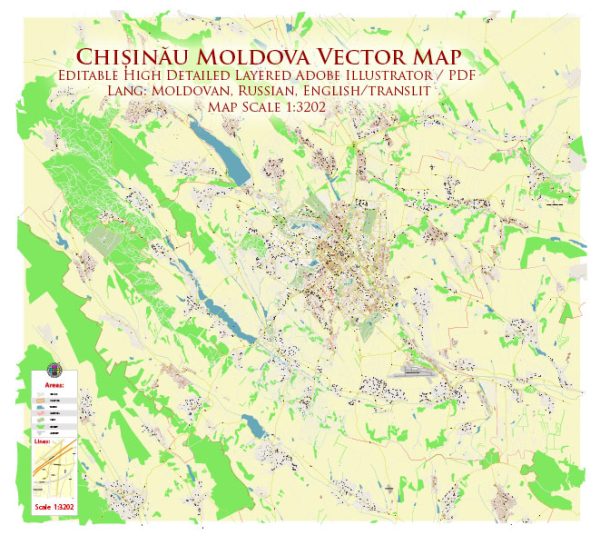Chisinau, the capital city of Moldova, has a rich and complex history that reflects the region’s diverse cultural influences and political changes. Here’s a brief overview of Chisinau’s history:
- Early Settlement: Chisinau’s history dates back to the 15th century when it was a small Moldovan village. The name “Chisinau” is believed to have originated from a medieval fortress called “Chisla Noua” or “Chesnoc.”
- Ottoman and Russian Rule: In the 18th century, the area came under Ottoman rule, and later, in the 19th century, it was incorporated into the Russian Empire following the Russo-Turkish Wars. Under Russian rule, Chisinau developed as an administrative center and experienced a growing population.
- Industrialization: During the 19th century, Chisinau saw significant industrialization, with the establishment of factories, trade routes, and the development of the city’s infrastructure. It became a prominent economic and cultural hub in Bessarabia.
- World Wars and Political Changes: Chisinau experienced significant upheaval during the two World Wars and the Russian Revolution. It briefly became the capital of the Moldavian Autonomous Soviet Socialist Republic, which later merged with the Ukrainian SSR to form the Moldavian SSR. In 1940, the city fell under Soviet control and became part of the Soviet Union.
- Independence and Post-Soviet Era: Following the dissolution of the Soviet Union in 1991, Moldova declared its independence, and Chisinau became the capital of the newly independent Republic of Moldova. The city faced economic and political challenges during the early years of independence but gradually began to stabilize.
- Modern Chisinau: Chisinau has since undergone a series of changes, with efforts to modernize the city’s infrastructure and economy. The city is known for its mix of architectural styles, reflecting its history, including pre-war buildings, Soviet-era structures, and more contemporary developments.
- Cultural and Historical Landmarks: Chisinau is home to several museums, theaters, and cultural institutions that showcase Moldovan history and culture. Notable landmarks include the Nativity Cathedral, Triumphal Arch, Stefan cel Mare Central Park, and the Pushkin Museum.
- Political Significance: As the capital of Moldova, Chisinau is the political and administrative center of the country. The city has been a focal point for discussions related to Moldova’s domestic and foreign policy, including its relationship with Russia and the European Union.
Chisinau’s history is marked by a blend of Moldovan, Ottoman, Russian, and Soviet influences. Today, it is a city striving for economic growth and cultural development while preserving its historical and architectural heritage.


 Author: Kirill Shrayber, Ph.D.
Author: Kirill Shrayber, Ph.D.